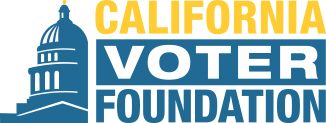Excerpts:
Two special elections were held in California on Tuesday, both for state Senate seats, and the enthusiasm among voters couldn’t have been more different.
In the Northern California’s 1st District, 26 percent of voters showed up to cast ballots. In the 33rd, which includes Long Beach and parts of southeast Los Angeles County, less than 7 percent showed up.
To put that in perspective, the third-place finisher in the 1st District race received more raw votes than the first-place finisher—Long Beach Councilwoman Lena Gonzalez—in the 33rd.
“I’d be hard-pressed to come up with two districts that are more different from one another,” said Rob Pyers, research director for the California Target Book, which provides comprehensive data to political professionals.
Part of the reason for the disparity is demographics: Certain groups are more likely to show up to the polls.
The 1st Senate District has nearly 41 percent registered Republicans compared to the 55 percent Democrats in the 33rd. The 1st is also majority white (79 percent) while the 33rd is majority Latino (70 percent).
“There’s no single factor, but traditionally certain voter groups are less reliable in voting than others,” Pyers said.
He said that includes younger voters, voters with less advanced education, the less affluent and Latino voters. There’s also a greater number of noncitizens in Southern California—and the 33rd District seems to hit all of those factors.
------
Location also plays a major role.
With the state capital and Silicon Valley to the north, Northern California is considered to be more politically active as a region, said Kim Alexander, president of the California Voter Foundation, a nonprofit that aims to improve the election process.
“I think it’s the culture,” Alexander said. “What animates Southern California is the entertainment industry. In Northern California there’s more awareness of policy impacts.”
Even the media coverage of elections is different between the northern and southern parts of the state, with Alexander pointing to the fact that television and radio stations help print publications provide news on elections in Northern California.
“Historically, there’s been much more media oversight of elections [in Northern California],” Alexander said.
Coverage of the 33rd state Senate District special election was very limited. Besides the Post, only a handful of local or regional outlets covered the race in depth.
While Northern California is not immune to the countrywide gutting of newsrooms, its own special election for the 1st state Senate District on Tuesday was reported on by multiple print, radio and television outlets.
-----
However, Alexander believes there should be reforms to “stop the cascade of special elections.”
Besides it being costly to taxpayers (this special election is estimated to cost Los Angeles County $2.93 million, according to officials), she believes it’s unfair that sitting officeholders can run for another office too.
“In a normal workplace that would never be tolerated but because this workplace is held by other politicians, they tolerate it because they may hope to do their own running,” Alexander said.
She recommends a law that states any state officeholder who runs for a seat in an election must also leave their current seat open in that same election.
Ricardo Lara, for example, successfully ran last November for state insurance commissioner. Under Alexander’s recommendation, his seat as the 33rd state Senate District representative would have also been open in that same election. (full story)

